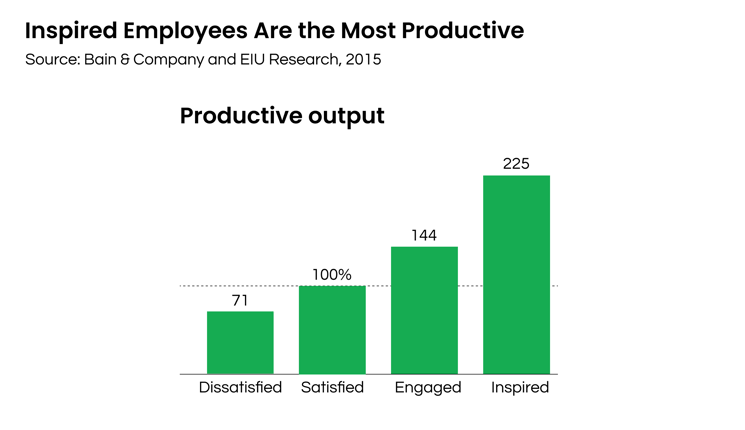Why You Should Invest in Employee Well-Being

Setting the scene
In 2022, we have a much better idea of what wellness and well-being in the workplace mean.
There are multiple definitions of this concept. The International Labour Organisation (ILO) defines “workplace well-being” as:
… All aspects of working life, from the quality and safety of the physical environment, to how workers feel about their work, their working environment, the climate at work and work organisation.
As it never hurts to refer to more than one source, here is another definition from Wrike.com:
Employee wellbeing is defined as the overall mental, physical, emotional, and economic health of your employees. It’s influenced by various factors such as their relationships with co-workers, the decisions they make, and the tools and resources they have access to. Hours, pay and workplace safety also have a significant impact on employee wellbeing.
In brief, workplace well-being encompasses both the physical and mental health of the workforce.
It also touches on feelings of being valued, supported, purpose-driven and fulfilled. But why should companies care how healthy or (dis)satisfied their employees are?
The benefits of investing in workplace well-being have been researched for decades. Satisfaction in the workplace has been shown to significantly increase productivity while decreasing employee turnover.

Additionally, according to the Return to Work Knowledge Base, increased employee well-being translates into less uncertified sick leave and compensation claims related to stress.
Conversely, ignoring the physical and mental health of employees poses risks for both the workforce and the organisation. Studies have established a link between workplace stress and poor mental and physical health. This includes depression, anxiety, high blood pressure, cardiovascular disease, and digestive disorders. On an organisational level, each year, workplace mental health-related issues are estimated to set employers back:
- $200-300 billion in the USA;
- $13.6 billion in Australia; and
- €617 billion in Europe.
in costs associated with underperformance, absenteeism and access to health care.
How to improve your employees' physical and mental well-being
Sustainable business practice is about more than reducing negative impacts. It is also about creating positive impacts. Therefore, workplace well-being requires more than the removal of stress factors. It requires the creation of positive, morale-boosting experiences for employees.
-png.png?width=837&height=484&name=Figure%202%20(2)-png.png) According to the RTW Knowledge Base, the most influential factor in workplace well-being is the climate & culture of the workplace.
According to the RTW Knowledge Base, the most influential factor in workplace well-being is the climate & culture of the workplace.
The research states that, “the most effective way to increase morale and reduce distress” is to improve leadership and processes related to staff recognition and decision-making.
In a 2018 article for McKinsey, Stanford University Professor J. Pfeffer highlights a link between:
- Employee health
- Job control
- Social support
Job control, meaning the degree of autonomy that employees have over the work they do, has a “major impact” on the physical and mental health of employees.
Hence, companies can decrease negative effects by giving employees more autonomy and reducing micromanagement.
Social support impacts general health and acts as a buffer against work-related stress too. Social support in the workplace is undermined by putting employees against each other and creating competitive environments.
Conversely, it is bolstered when companies show their employees that management is committed to:
- Offering help;
- Encouraging people to care for each other;
- Using a language that communicates a sense of unity. For example, it can be referring to the team as a “team” or “village”, instead of managers and employees.
In a 2019 article, the Harvard Business Review summarised the findings of a survey of 1,601 workers in North America. The survey found that employees wanted simpler changes to their work environments. Specifically, it turned out that air and light quality played the largest roles in employee performance, well-being and productivity. Additionally, another important element resulting from the survey was the freedom to personalise the workspace.
Our approach to employees' well-being
At Nexio Projects, we support the mental and physical health of our team in a variety of ways:
Therapy and mindfulness platforms
As part of our benefits package, we've partnered with Open-Up and Headspace.
Open-Up is an online tool that provides direct access to certified psychologists. The app allows you to book online sessions with professional therapists ready to listen to you and offer support.
Headspace is a mobile app that facilitates meditation sessions and trains one’s brain to deal effectively with their thoughts. It promotes calmness and mindfulness, which are both crucial to limiting work-related stress.
Team workouts
The benefits of physical activities for individuals and groups have been long proven. For us, training together strengthens relationships within the team and gives us the opportunity to have fun outside of working hours.
Nexio Projects organises monthly team workouts that range from yoga classes to basketball and kickboxing. Additionally, we have taken up the daily habit of stretching together at the office to prevent posture issues and take a break from our tasks.
Workspace
Our office is an inspiring place from which to work. We're glad to have:
- Great natural light thanks to big windows and a glass roof;
- Standing desks, which are great if you're tired of sitting all day long;
- A focus room, in which calls are not allowed. This quiet space is great for completing tasks that require more concentration;
- A library, filled with books that we can borrow and exchange;
- Gender-neutral toilets, as we strive to ensure that everyone feels included;
- Lockers, that give everyone a dedicated space to store their personal items; and
- A big kitchen, where we gather for lunch and can also break up the day with light conversations.
Flexible working
Our policy allows for flexible working hours. This gives us the opportunity to take longer lunch breaks, do some sports or go for a walk.
Additionally, we can work from abroad one week per month. This is very important for an international team like ours, as it gives us the chance to visit our families back home.
Feedback culture
We strongly believe in the power of feedback to keep improving and growing as individuals and as a team. Yet, feedback can be tricky as well.
To create a healthy feedback culture within our organisation, we've organised dedicated workshop sessions as well as internal guidance on how to approach feedback.
Team building
To reinforce the relationships across our team, we organise Quarterly Events. They are great for taking our minds off of work and spending some quality time together. We usually spend the afternoon doing team-building activities and then close off the evening with a nice team dinner.
Gratitude culture
At Nexio Projects, we promote a culture of gratitude. This means that:
- We celebrate each other's successes and milestones. The goal is to make sure that even smaller things don't go unnoticed and that everyone feels truly appreciated;
- We reflect on who and what we are grateful for on Fridays, during the weekly "Gratitude Award". This tradition of exchanging words of gratitude enhances communication between team members, breaks barriers between them, and reduces stress. It is also a moment for us to get to know each other on more than just a professional level.
Conclusion
The COVID-19 pandemic brought with it near-irrevocable changes to the global workforce. The Great Resignation showed that people are no longer willing to live out the punchline of the common “I hate my job” joke.
This means that now, perhaps more than ever before, it is essential to invest in employee well-being to mitigate the risks and costs of poor health in the workplace.
This article can serve as a starting point in your company’s journey to improve the well-being of your workers. For more, there is a wealth of information available to design a wellness programme to support your employees.